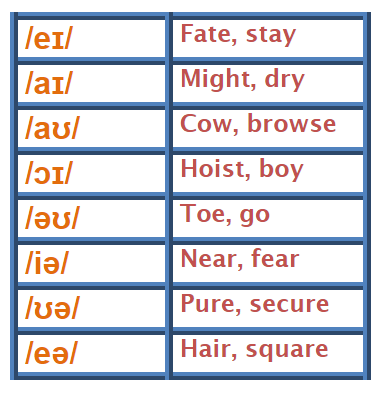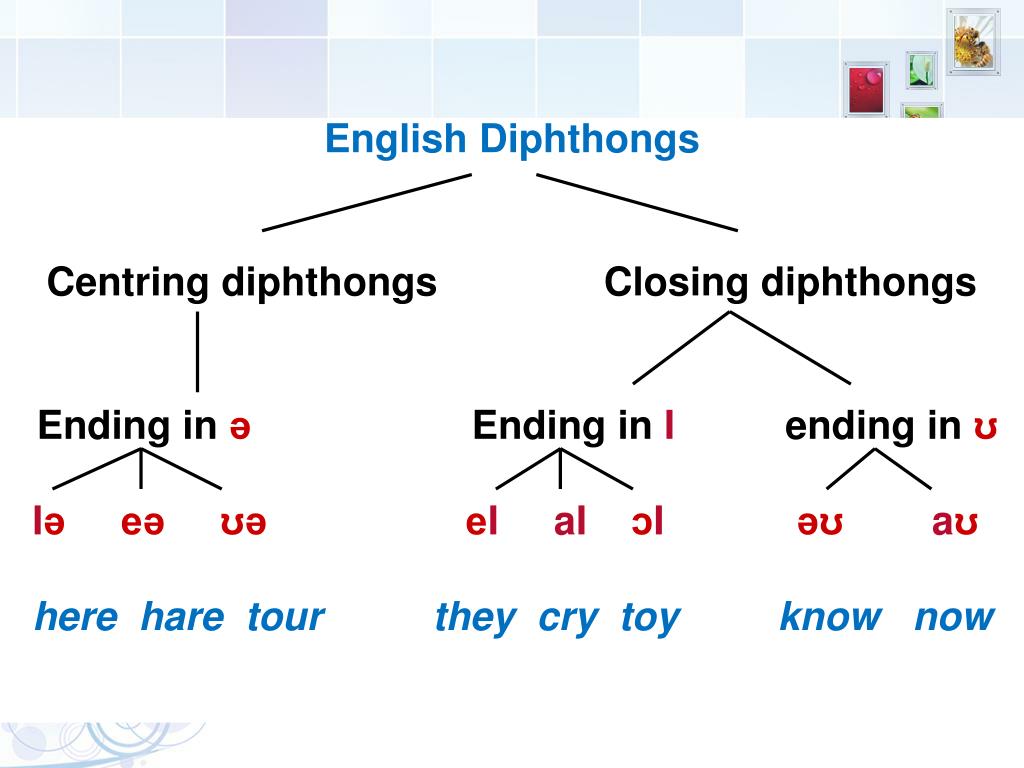


These are not marked as diphthongs in Kenyon and Knott's transcription of American English phonemics, because they're predictable.Īs for distinctive features, the precise representation depends on which version of "distinctive feature" theory one wishes to use, and what its constraints and presuppositions are.

The "untrue" diphthongs are the tense vowel phonemes /i, e, o, u/, which are predictably terminated by a gesture toward /i/ (for /e, i/) and toward /u/ (for /u, o/).
/oy/, as in soil, toy, coin, Troy, ploy, oink, and hoi polloiĪll of these are complex vowel clusters, starting at a phonemic low vowel (/o, a/), and continuing with a gesture toward a high front vowel /i/, represented as a semivowel /y/, or towards a high back vowel /u/, represented as a semivowel /w/. /aw/, as in ow, bough, how, brown, snout, out, trowel, and sauerkraut. /ay/, as in I, by, buy, try, five, tie, lye, hi, high, and jai alai. In American English, the "true" diphthongs are considered to be







 0 kommentar(er)
0 kommentar(er)
